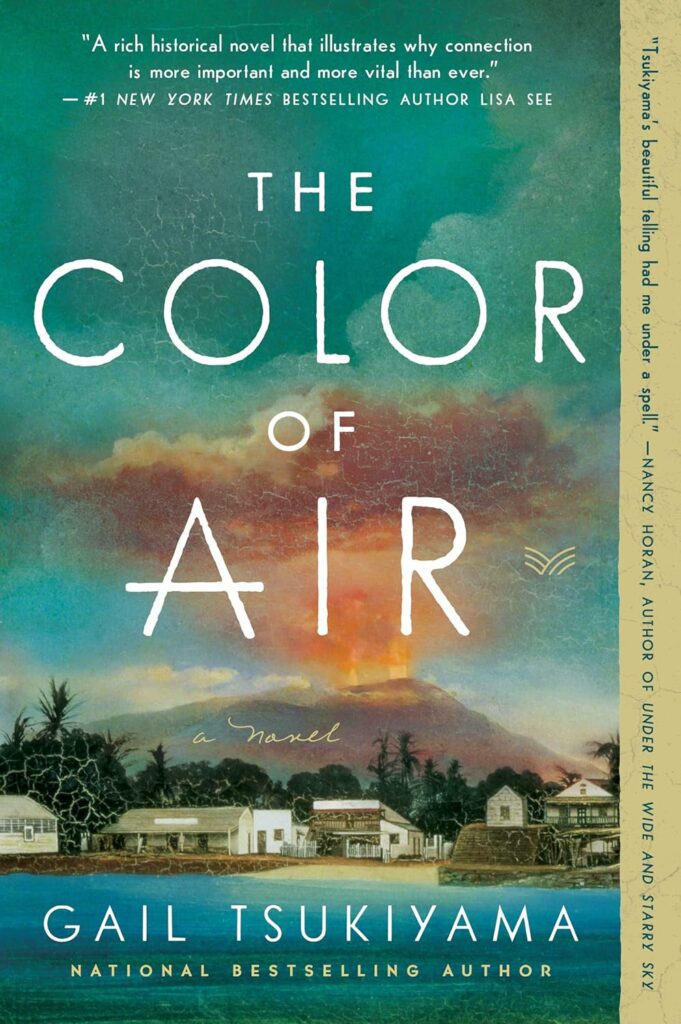The Color of Air by Gail Tsukima is a historical novel describing an impending volcanic eruption on Hawaii’s big island in 1935.
The story centers around four main characters, mostly second-generation Japanese, and flashes back in time to their youth. Most of the main characters’ parents were lured from Japan to work the sugar cane fields. They were given promises of wealth, but in fact were treated like slaves while owners of the sugar plantations became rich. Nevertheless, the people formed a close-knit community and cared for one another, centering their lives in Hilo.
The main character, Koji, mourns the death of Mariko, the woman he loved but who married another man. Mariko’s husband neglected her and their child, Daniel, and eventually abandoned the family. When Daniel, now a physician, returns to Hilo, he and Koji resume their close friendship and Daniel learns the true story about his father and the suffering he caused the family.
The author vividly describes Hawaii and its beauty–the smell of the ocean, the rushing sound of breaking waves, the fragrance of mangoes as they ripen on the tree. But she also describes the stench of the active volcano, Mauna Loa, which has erupted and is spewing hot lava across the land, bringing fear to its residents of losing their homes. She also describes the sugarcane industry, its back-breaking labor, the stench of the burning fields, and the unfair treatment of the laborers.
I enjoyed this story of Hawaii in its early days. I lived in Hawaii 1955-1957, before it was a state, and knew and worked with many second-generation Japanese on Oahu. We witnessed and smelled the burning of sugar cane fields, which they do just before harvest to reduce the volume of waste material for transport and processing. It didn’t occur to me at the time how difficult that was for the workers to inhale the smoke while enduring the hardship of harvest. I love Hawaii, its beauty and mystery, but now have an even deeper appreciation of its people.


